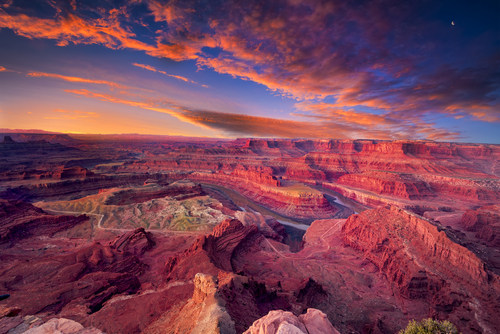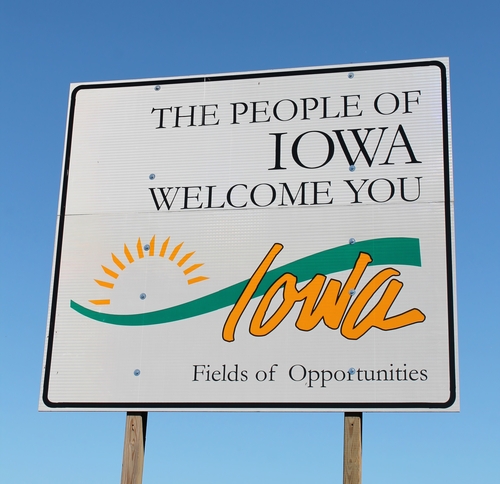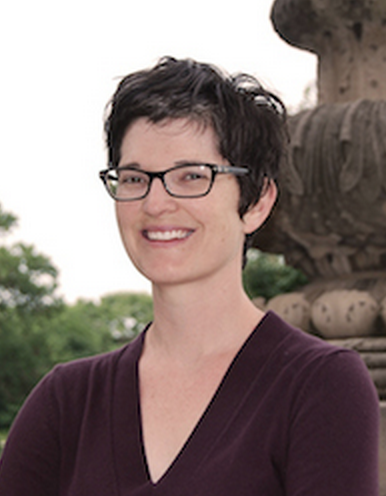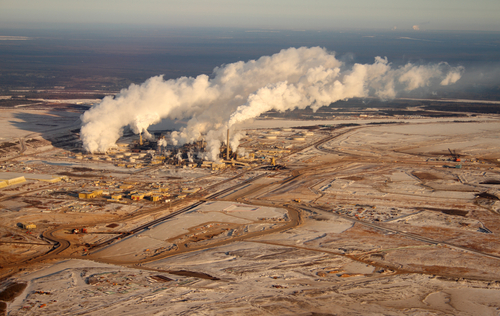March Networker is now available!
What's in the Pipeline: Common Cause and Joint Action, Not Oil
Solastalgia is the pain experienced when there is recognition that the place where one resides and that one loves is under immediate assault . . . a form of homesickness one gets when one is still at 'home'. The term and definition are Glenn Albrecht’s, a professor of Sustainability in Australia, who coined it in response to the many calls he was receiving from residents in an Australian village whose farming region was being taken over by the coal industry.
I was born in Utah, where a Canadian-based  company plans to open the first large U.S. tar sands mine. The Tavaputs Plateau, the Book Cliffs, the Green River; these places are the many memories of my childhood. I have a love and reverence for the desert, passed down to me by my parents and kin who found a home and a deepened spirituality in this ‘desert solitaire’ [1].
What are not often named are the places outside of southern Utah that will be impacted if the tar sands mine project goes through. Because, what happens to the Green River happens to the Colorado River, which in turn happens to Lake Mead, and eventually the Gulf of California (due to damming, less than 1% of the Colorado River ever makes it to the sea). This project would contribute to local and global greenhouse gas emissions, in turn contributing to climate change. Like the pipelines and the materials they transport, the impacts from these projects are not bound by state borders. Last fall, it was announced that there was going to be a new pipeline running across the farmlands, public lands and assets, roadways and waterways of five states including Iowa - the legal address of SEHN and Executive Director, Carolyn Raffensperger's home. While it is difficult to get accurate information on the Internet about just how many pipeline proposals for the U.S there are, one fact remains consistent:
Pipelines spill.
company plans to open the first large U.S. tar sands mine. The Tavaputs Plateau, the Book Cliffs, the Green River; these places are the many memories of my childhood. I have a love and reverence for the desert, passed down to me by my parents and kin who found a home and a deepened spirituality in this ‘desert solitaire’ [1].
What are not often named are the places outside of southern Utah that will be impacted if the tar sands mine project goes through. Because, what happens to the Green River happens to the Colorado River, which in turn happens to Lake Mead, and eventually the Gulf of California (due to damming, less than 1% of the Colorado River ever makes it to the sea). This project would contribute to local and global greenhouse gas emissions, in turn contributing to climate change. Like the pipelines and the materials they transport, the impacts from these projects are not bound by state borders. Last fall, it was announced that there was going to be a new pipeline running across the farmlands, public lands and assets, roadways and waterways of five states including Iowa - the legal address of SEHN and Executive Director, Carolyn Raffensperger's home. While it is difficult to get accurate information on the Internet about just how many pipeline proposals for the U.S there are, one fact remains consistent:
Pipelines spill.
A month after New York banned Fracking in the state, 40,000 gallons of oil spilled into the Yellowstone River. Only 548 (about 23,000 gallons) of the over 1,200 barrels have been recovered [2]. This is one of thousands of fossil fuel industry related spills and other accidents that happen yearly. The U.S. oil and gas industry was responsible for at least 7,662 spills, blowouts and leaks in 2013, which averages to about 20 spills per day (not including Louisiana spills. That data was not made available by the state) [3]. That is of the accidents reported. Nearly 300 oil spills and 750 ‘incidents’ in less than two years in North Dakota went unreported to the public [4]. And there are thousands of oil and other toxic accidents happening around the world daily. The Niger Delta, has had a total of 6,817 oil spills between 1976 and 2001, with 3 million barrels of oil lost, 70% of which was not recovered [5].
The U.S. is beginning to experience some of the true costs of the extraction industry; impacts the U.S. has largely displaced onto communities in developing countries, indigenous communities, and communities here who are historically disenfranchised; communities of color and poor communities in the urban and rural 'margins'. Projects persist because they are tucked away in places socially constructed to seem 'invisible'. Only recently have we seen an upsurge in resistance here against projects like Fracking and landmark decision like the one to ban Fracking in New York; incredible, important organizing that ushered in more exposure and much needed conversation about fossil fuel development issues in the U.S. These efforts also remind us that Fracking has been alive and well in the U.S. for over 6 decades, with origins older than the petroleum industry.
There won't be any Fracking in New York, and if President Obama follows through with his commitment, there will be no Keystone XL pipeline. While that is an incredible moment in the transition away from fossil fuels, it does not reduce the likelihood of development in other communities. Indeed, uncoordinated resistance could increase the burden by displacing it. There are little to no examples of oil spills being handled responsibly and justly, to say nothing of the time and money it takes to clean up what inadequate amount can be captured. People in positions of power and decision-making have a shamefully large amount of evidence to justify the rejection of fossil fuel industry projects in their communities. The question becomes, will communities have the information they need to resist because the industry as a whole is antiquated and harmful, or will they resist up until the project goes elsewhere?
“Life as we know it" has an incredibly short history (the birth of the oil industry occurred in the U.S. around 1901) and short staying power (many of these projects provide a relatively small number of jobs for only a handful of years). Our environmental issues have a much longer history, rooted in historical social and racial injustices, which, in an era of manifest destiny, are symptoms of historical economic injustices. "Life as we know it" today is that we know we've done virtually nothing in the U.S. to resist fossil fuel extraction in other places. It had to come home.
We also know that these projects are starting to impact more visible spaces. Acknowledging when and why we start to care about something is integral to shaping our organizing together and a path forward. Perhaps the most important thing we can do as citizenry is reposition our gaze so that both the future and the past remain in our periphery vision. As Wendell Berry put so well in his recent article in Yes! Magazine: "The evil of the day, as we know, enters into it from the past. And so the first right thing we must do today is to take thought of our history. We must act daily as critics of history so as to prevent, so far as we can, the evils of yesterday from infecting today."[6]
Our legacy can be altered by how we frame our opposition to these projects moving forward. We must organize like the pipeline pathways themselves: a transnational network, but one transporting information, community tools, and support; an interconnected grid transmitting history, legacy, and common cause to protect the things we share.
This work is so closely aligned with SEHN's work to move new ideas and policies into mainstream conversation, protect the land, work with grassroots groups, and bring new community engagement tools to the table. Read on to learn more about SEHN's new partnership and work with the Bakken Pipeline Resistance Coalition, and our incredible new board member Angie Carter. We hope you enjoy this March Networker!
Yours,
Kaitlin Butler, Program Director
~
[1] “Desert Solitaire” is the tile of a book by Edward Abby (1968), and borrowed for its perfect description here.
[2] For updates on the Poplar pipeline oil spill in the Yellowstone River, visit: http://www.deq.mt.gov/yellowstonespill2015.mcpx
[3] Atkin, Emily, "America's Oil and Gas Industry Averaged At Least 20 Spills Per Day in 2013", Think Progress, May 13, 2014. Available online: http://thinkprogress.org/climate/2014/05/13/3437109/oil-spills-2013/
[4] Kroh, Kiley, "Nearly 300 Oil Spills Went Unreported In North Dakota In Less Than Two Years." Think Progress, October 27, 2013. Available online: http://thinkprogress.org/climate/2013/10/27/2843021/oil-spills-unreported/
[5] For more on the Niger Delta spills visit: http://ccrjustice.org/learn-more/faqs/shell%2526%2523039%3Bs-environmental-devastation-nigeria
[6] From Yes! Magazine, "Wendell Berry on Climate Change: To Save the Future, Live in the Present". In this selection from his new book, the poet and farmer Wendell Berry connects the dangers of the future to a failure to live fully in the here and now. March 23, 2015. Available online: http://www.yesmagazine.org/issues/together-with-earth/wendell-berry-climate-change-future-present
SEHN's Work with Bakken Pipeline Resistance Coalition Carolyn Raffensperger, Executive Director
SEHN began over 20 years ago as a coalition of many environmental groups to address the misuse of science in public health and environmental policy. That meant we had two channels of work—policy and supporting grassroots efforts in their local communities. Times change. The toxic chemical struggle moved from being a place-based struggle to essentially a legislative and regulatory struggle. But the field of environmental movement had larger changes than the evolution of the toxics movement. We also had vivid evidence that climate chaos was the monster at our door while at the same time the rise of extreme energy extraction brought huge new challenges to community groups across North America. Local communities everywhere were facing a pipeline or fracking and drilling or mining sands to support extreme energy extraction. But the field of environmental movement had larger changes than the evolution of the toxics movement; we also had vivid evidence that climate chaos was the monster at our door while at the same time the rise of extreme energy extraction brought huge new challenges to community groups across North America. Local communities everywhere were facing a pipeline or Fracking and drilling or mining sands to support extreme energy extraction. Fracking and extreme energy extraction provide the feed-stock for more toxic chemicals like pesticides and plasticizers but the spills, leaks and accidents associated with the Fracked crude oil posed new environmental health hazards. Moreover, all this new oil and gas is resulting in a profligate use of energy adding to the now guaranteed outcome of climate chaos. Extreme energy extraction has returned the environmental movement to its roots and place-based, grassroots efforts to protect and defend our homes.
SEHN is now the fiscal sponsor of the Bakken Pipeline Resistance Coalition
(see more below).
We invite you to learn more about this work , and help us continue to provide this crucial, collaborative support in 2015.
, and help us continue to provide this crucial, collaborative support in 2015.
This work is so closely aligned with SEHN's work to move new ideas and policies into mainstream conversation, protect the land, work with grassroots groups, and bring new community engagement tools to the table. SEHN honors and recognizes the strengths of other groups. Our most valued work is adding SEHN's shoulder to the wheel, with and alongside you – concerned citizens, grassroots activists, parents, and earth guardians of all stripes.
Welcoming Angie Carter to SEHN's Board of Directors
Over the years, the SEHN board has not followed standard nonprofit wisdom: our board has always been a wisdom council. We have the honor of introducing SEHN's new Board of Directors member, Angie Carter!
A ngie is a PhD candidate co-majoring in Iowa State University’s Graduate Program in Sustainable Agriculture (GPSA) and sociology and holds an MFA in creative writing from the University of Arizona. Carter's experiences growing up in rural Iowa during the Farm Crisis of the 1980s inspire her commitment to social change. Her public sociology has led to research partnerships with multiple community organizations. She is one of the key organizers of the Bakken Oil Pipeline Resistance Coalition.
You can read her bio here
The website of the Coalition here
ngie is a PhD candidate co-majoring in Iowa State University’s Graduate Program in Sustainable Agriculture (GPSA) and sociology and holds an MFA in creative writing from the University of Arizona. Carter's experiences growing up in rural Iowa during the Farm Crisis of the 1980s inspire her commitment to social change. Her public sociology has led to research partnerships with multiple community organizations. She is one of the key organizers of the Bakken Oil Pipeline Resistance Coalition.
You can read her bio here
The website of the Coalition here
A Legal and Political Analysis of the Proposed Bakken Oil Pipeline in Iowa
In this piece Carolyn Raffensperger lays out grounds for rejecting the Bakken pipeline project based on the things we all share. The principles speak directly to the true basis of the economy—the commons—the role of government to protect the things we share, and the authority to act based on the expansion of rights to include the community, nature, and future generations.
Carolyn Raffensperger lays out grounds for rejecting the Bakken pipeline project based on the things we all share. The principles speak directly to the true basis of the economy—the commons—the role of government to protect the things we share, and the authority to act based on the expansion of rights to include the community, nature, and future generations.
 A Fact Sheet on Energy Transfer Partners and the Dakota Access, LLC
A Fact Sheet by Carolyn Raffensperger, prepared for the Story County Community Meeting of the Bakken Pipeline Resistance in December 2014. This Fact Sheet is one example of how to identify places for intervention or points for engagement around these projects.
A Fact Sheet on Energy Transfer Partners and the Dakota Access, LLC
A Fact Sheet by Carolyn Raffensperger, prepared for the Story County Community Meeting of the Bakken Pipeline Resistance in December 2014. This Fact Sheet is one example of how to identify places for intervention or points for engagement around these projects.

